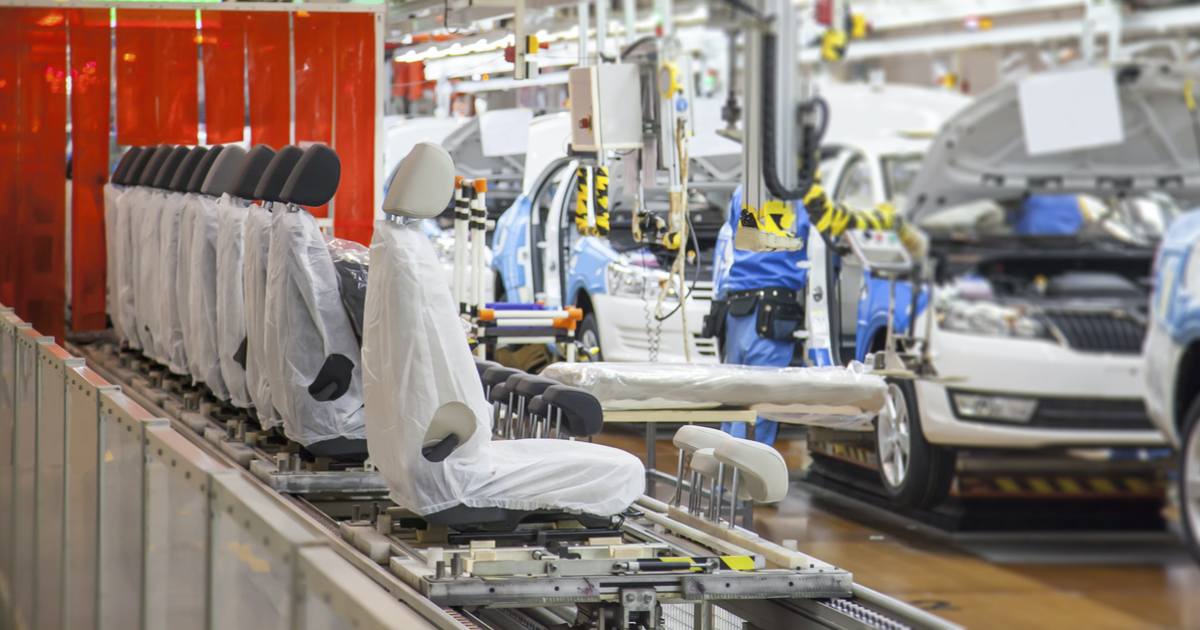It is easier than ever for foreign buyers to have a manufacturer handle high-mix, low-volume orders, with short lead times. In other words, flexible manufacturing.
What is flexible manufacturing?
When people think of producing in China, they think of massive batches of products that take 6 to 10 weeks to be made and delivered. Fortunately, this has been changing.
Flexible manufacturing is required when forecasts are not accurate and customers want the ability to adjust their decisions late in the ordering process.
It requires moving away from the traditional batch-and-queue approach, and toward a more lean setup. It impacts the whole chain of functions, from suppliers contracts to planning and purchasing, all the way to fabrication and assembly, as well as delivery.
It has been a reality in the automotive industry for decades — no two cars on the same assembly line have exactly the same set of options (outside color, type of seat, type of engine, and so on). To get to that level of excellence, it has to be engineered from the ground up. However, getting closer to that ideal model is often easier than people think.
What are the key elements that support flexible manufacturing?
I broke it down into 6 key elements, based on my experiences consulting with factories (I wrote before about a few examples of projects). If these 6 elements are all aligned, you might get down to an MOQ of 1 piece!
1. Accelerated product development
If you want to put a new product on the market, you’ll need to go through design and development first. And China (and particularly the Guangdong province) has several advantages:
- A very deep supply chain (most components and materials are available on-site, at all levels of quality and price)
- Many factories with export experience and an R&D staff
- In case working directly with a factory for the initial R&D is not easy or unrealistic, a wide range of service providers (such as Sofeast) to build the bill of materials, develop the detailed designs, and work on prototypes
- Pretty much all the support services needed (laboratories for certifications or reliability testing, etc.)
And, if you tend to make the same type of products in many variations, your designers definitely need to make modular design bases (one such base could help speed up the development of all similar product designs). Again, think cars — they share the same ‘platform’ and a lot of common parts with other models.
2. Acceptance of low-quantity orders
Things have changed drastically over the past 20 years in this country. More and more suppliers accept small batches, as long as they see they can make a profit in the end.
Yes, you will still read about MOQs (Minimum Order Quantities). However, if you present your project clearly, and they see the bigger picture, suppliers can often be flexible. Make sure to mention:
- Regularly growing volumes over time
- Individually small orders and many SKUs, but overall a decent volume, and a decent margin
- Bragging rights for the factory owner — for example, the product is featured in an ad with a celebrity, is distributed in Apple Stores…
In those large industrial groups, this is often difficult to negotiate. They often have ways to calculate the “minimum efficient lot size”, and you probably won’t be able to reason with their accountants. You will have better luck with smaller organizations.
3. Acceptance of holding some inventory
I know, that doesn’t sound very lean. However, if your forecasts are relatively accurate and if you accept to pay a little more, you can probably find component suppliers that accept to hold some parts in inventory.
This way, the assembly facility can get what it needs in a matter of hours, not weeks, and start churning out finished goods pretty fast.
4. A manufacturer’s planning system that supports agility
Each factory has a way to ensure the materials, the equipment, the right people, and other needed resources, come together at the right time.
Most planning people I have met have been conditioned to think that purchasing large batches, and processing large batches, is the way to keep costs down. If they abandon that mentality and they go for lower batches, they can make nearly anything possible… as long as the next element is in place.
5. Flexible lines
Are your processes overly rigid? I have seen presses that take 20+ hours to change over (including the time to test the new dies, until good products start to be made again), assembly jigs that need to be replaced manually before each work order, and operators who are paid by the piece (and insist on working only on long batches).
The good news is, all this can be changed with good engineering and good HR management.
Here are three approaches that will help you:
- Connect the processes that are needed to make the same product as tightly as possible. Don’t let a stamping machine work on the same part for 1 week (building a lot of inventory, as a buffer between stamping and the next process).
- Similarly, have several small warehouses close to the next point of use, rather than 1 central warehouse. Close proximity to the next process is better.
- Resist high-tech automation… except if it helps with flexibility. All too often, automated equipment makes everything more rigid, as it calls for long production runs.
6. A strong process engineering team, and strong support from top management
All this would sound like a fairy tale if I didn’t mention that managing this change is hard:
- Old habits will need to be fought — many suppliers, purchasers, production people, accountants, etc. will complain. Make sure you show them a clear business case and you stay the course.
- Processes will need deep adjustments. Go for a “quick win” fast, and get to results that nobody thought were possible.
- As the pace accelerates and inventory decreases, the quality staff will see its work change a lot. On the one hand, it may have to find ways to delegate some work to the production staff; on the other, it will find root causes of issues much faster and easier than before (‘the trail is still hot’, as they say).
Have you been able to push a factory to make that type of transformation? Or maybe on a much more modest scale? What worked, and what didn’t work?
Are you trying to find a manufacturer in China who is well-suited to your needs and can also deliver on their promises?
Sofeast has developed 10 verification steps to help importers find the right manufacturing partner in China. They’re shared in this FREE eBook: “How To Find A Manufacturer In China: 10 Verification Steps.”
It covers:
- Background checks
- Manufacturing capabilities
- Quality system auditing
- Engineering resources
- Pricing, negotiation, & contracts
- …and much, much more
Just hit the button below to get your copy and put yourself in a great position to get better results from Chinese manufacturers who supply your products:


